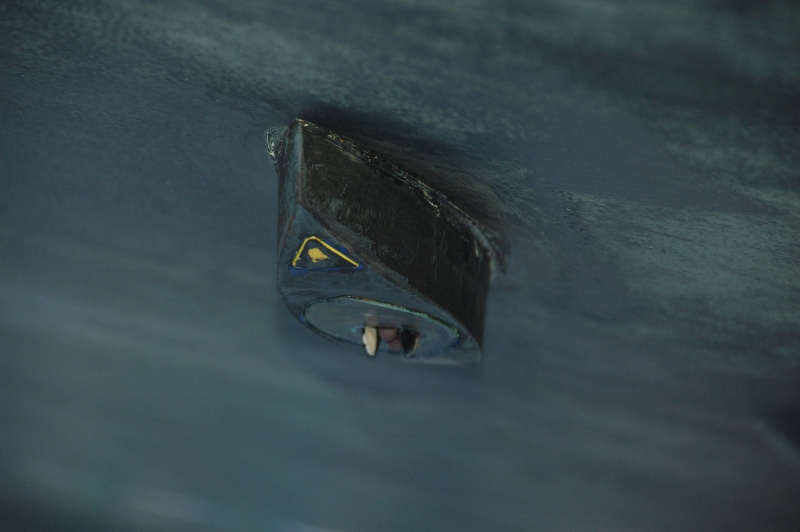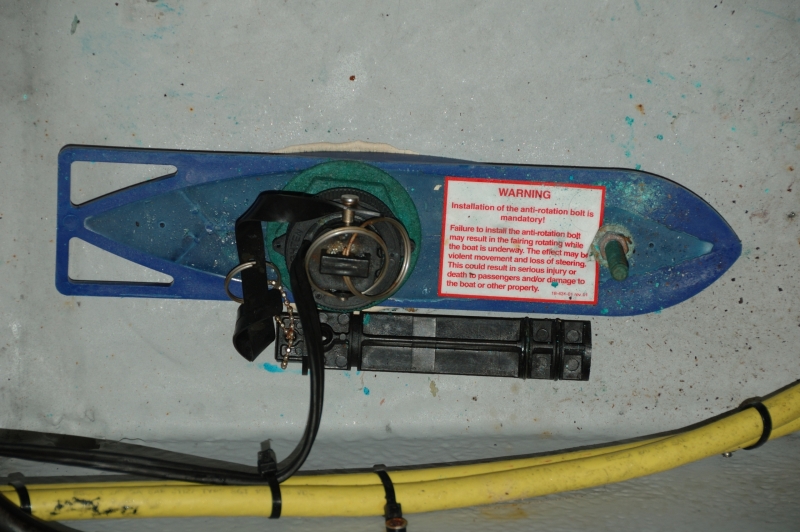Caring for Your Boat’s Transducer
22nd August 2023
Hidden below the waterline, the transducers are the eyes of our depth sounders and fish finders. They rarely cross our minds until the boat is hauled and we see them protruding from the hull or suspended from the transom. The fact that we can treat them so indifferently is a tribute to their design and durability, but like any other complex part of the boat, ignoring their maintenance can eventually lead to problems.

The primary maintenance requirement is fairly obvious: keeping the face of the transducer free of any buildup that may impede its performance. Caked-on dirt, marine plant life and barnacles can detract from the effectiveness of the instrument by causing turbulence or trapping air at the face, conditions that can interfere with the transmission signal and attenuate or muffle the reception of the return signal.
Cleaning the face of the unit should be done as soon as possible after the boat is hauled to prevent the contaminants from drying and becoming more difficult to remove. Marine growth needs to be carefully removed by carefully dragging a flat tool, such as a putty knife, across the transducer face. Finish cleaning by wet-sanding with a very fine-grit sandpaper.
The face of the transducer can become scratched or nicked, causing turbulence, or trapping air on the surface and eventually affecting the unit’s performance. The outer “skin of a typical transducer face is a fairly thick layer of polymer or epoxy, which means you can remove scratches or minor damage by lightly wet-sanding the face.

As almost every anit-fouling coating is harmful to bottom of the transducer, it is best to stay away from putting any coating on the transducer at all. There are solvents in almost every antifouling paint that will penetrate the transducer and cause issues. If you happen to know that you are using a coating that is non-destructive to the transducer, this is ok. But, the general rule of thumb is to leave them uncoated and clean them by using a diver or clean them when the boat is next out of the water. Ensure anyone re-applying bottom paint knows how to care for your transducer.
The sealing provisions for through-hull transducers should be thoroughly inspected every time the boat comes out of the water. Look for dried-out or missing sealant, or cracks that may indicate that some movement has occurred. If any of these conditions is evident, the transducer should be taken out and the old sealant removed. Then, the unit needs to be re-bedded into the hull. This can be a challenging task, one that may be best left to a professional who has the proper materials and expertise to handle it.
The wiring of the system should be part of your regular inspection, too. Electrical connections must be secure and free of corrosion. The condition of the transducer cable also is important. Nicks or breaks in its metallic sheathing can allow unwanted electrical noise or interference from other electronic devices to impact the performance of the depth sounder or fish finder. For the same reason, cables for VHF radios, inverters and other potential sources of electrical interference should not be closely bundled with transducer cables. If the proximity is unavoidable, extra cable shielding may be required.


